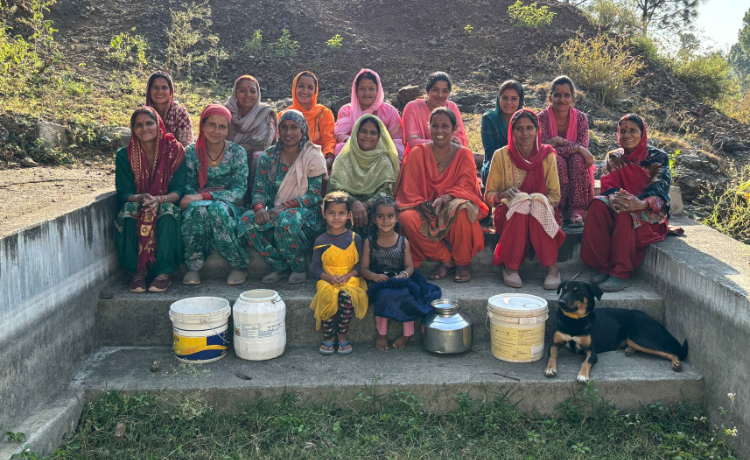In Banli village of Chandi gram panchayat, Himachal Pradesh, access to water was a daily struggle. For decades, women carried water from a traditional bouri—a small natural well that collects rainwater and is used for irrigation or drinking. But seasonal decline in water discharge, especially in summer, left over 70 families anxious. When nearby villages began denying them access to their wells, and purchasing water from tankers was the only fallback, the women of Banli knew they had to act.
What followed was a quiet but powerful movement—a story of women coming together to reclaim not only a water source, but also their collective strength.
1. Community Mobilization and Awareness - The turning point came with a water awareness meeting led by Ambuja Foundation, where the urgency of the declining bouri was acknowledged. Four women-led Self-Help Groups (SHG)— 40 members strong—were mobilised to rejuvenate the source. SHG meetings, supported by Ambuja Foundation, became hubs for planning and building confidence. Together, the women sought the Forest Department permissions for catchment work, collaborated with Ambuja Foundation’s technical team and agreed to provide the labour around their farm and family duties.
2. Trenching for Infiltration – The women dug 50 cubic metres (about 1000 feet) of trenches in the upper catchment—while managing daily chores. This slowed rainwater runoff, improved infiltration, and reduced erosion— supporting year-round groundwater recharge. Completed before the monsoon, the trenches ensured maximum impact.
3. Forest Plantation for Catchment Protection - During Van Mahotsav (forest festival) 2024, SHG members, representatives of panchayat raj institutions (PRI), and school children planted 150 saplings, including water-retaining native species like wild pomegranate (daadu) and deodar (devdar). These trees restore forest cover and improve water retention. “The plants will grow with our children,” said one SHG member. “They’ll both bring life to this land.”
4. Percolation Pond Construction - The women also excavated a percolation pond near the spring, allowing rainwater to seep into the aquifer. Soon, groundwater levels improved, and within months, the bouri’s discharge began increasing—even during the summer months. A storage tank was later built for drinking water needs.
5. Collective Ownership & Sustained Results - The women didn’t stop at infrastructure. They began monitoring and maintaining the source, ensuring its cleanliness and upkeep. Data of the previous 2.5 years had showed decline; however, the discharge, post works, increased by 60% from baseline levels recorded in 2022.
The transformation wasn’t limited to water. SHG women also began collective farming, selling vegetables, planting horticulture trees on private land, and continued savings, loans, and group activities that boosted their economic independence.
Inspired by the inroads made by Banli village, 30 bouris across the region have now been rejuvenated. This is the power of sisterhood. The women of Banli no longer carry water— they’ve become change agents.







